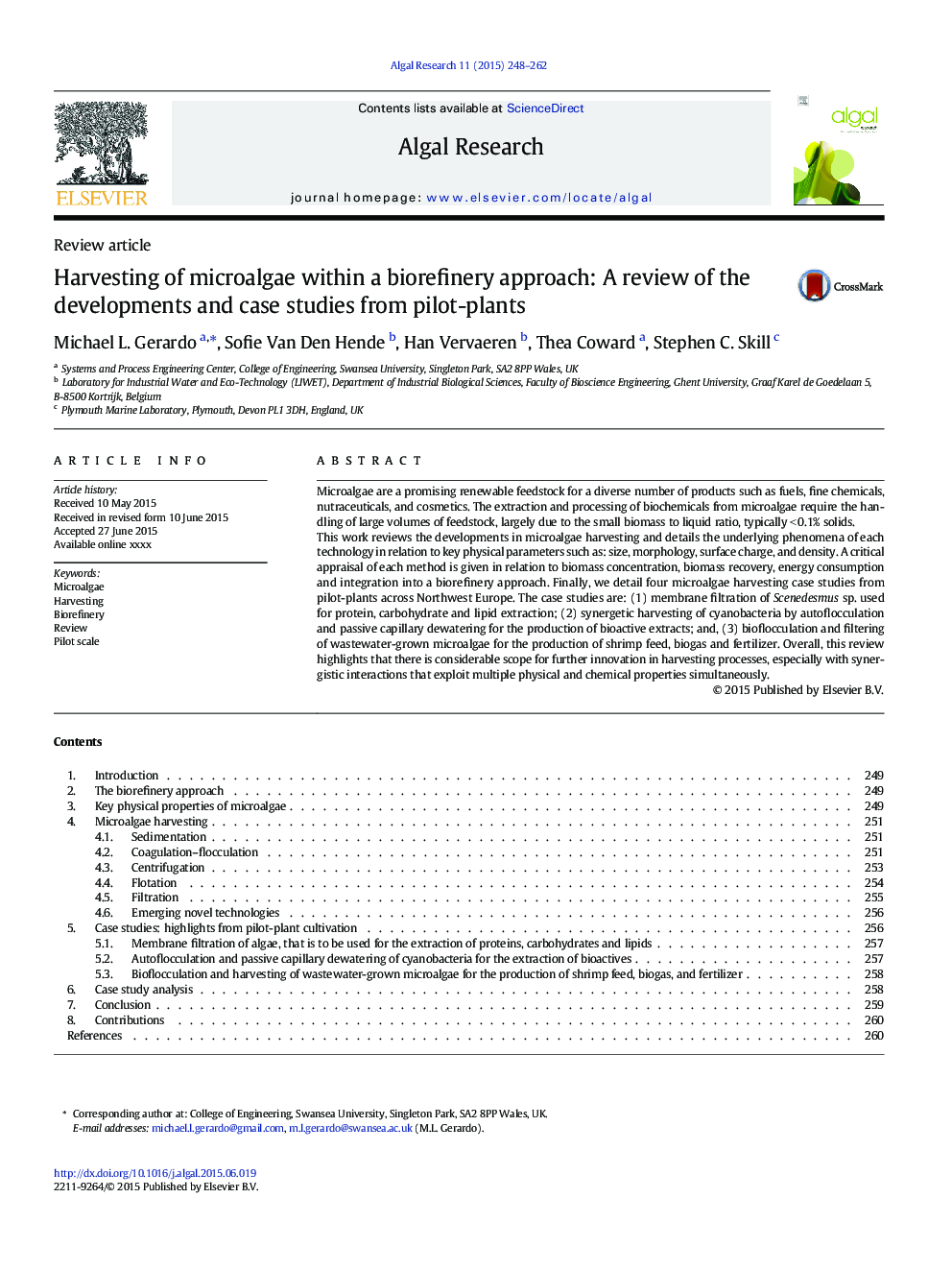| Article ID | Journal | Published Year | Pages | File Type |
|---|---|---|---|---|
| 8088039 | Algal Research | 2015 | 15 Pages |
Abstract
This work reviews the developments in microalgae harvesting and details the underlying phenomena of each technology in relation to key physical parameters such as: size, morphology, surface charge, and density. A critical appraisal of each method is given in relation to biomass concentration, biomass recovery, energy consumption and integration into a biorefinery approach. Finally, we detail four microalgae harvesting case studies from pilot-plants across Northwest Europe. The case studies are: (1) membrane filtration of Scenedesmus sp. used for protein, carbohydrate and lipid extraction; (2) synergetic harvesting of cyanobacteria by autoflocculation and passive capillary dewatering for the production of bioactive extracts; and, (3) bioflocculation and filtering of wastewater-grown microalgae for the production of shrimp feed, biogas and fertilizer. Overall, this review highlights that there is considerable scope for further innovation in harvesting processes, especially with synergistic interactions that exploit multiple physical and chemical properties simultaneously.
Related Topics
Physical Sciences and Engineering
Energy
Renewable Energy, Sustainability and the Environment
Authors
Michael L. Gerardo, Sofie Van Den Hende, Han Vervaeren, Thea Coward, Stephen C. Skill,
